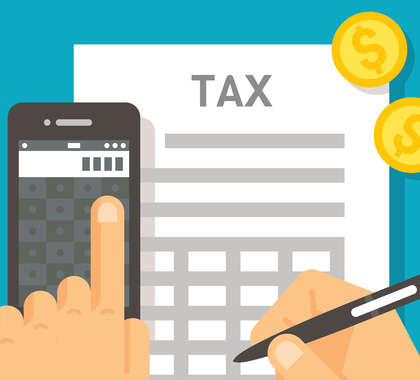Once a year, like clockwork, the day approaches. Catching some by surprise, prepared for in advance by others, we observe the holiday by standing in long lines at the post office, spending sleepless nights of anxiety going over lists, and giving our tributes to others.
What holiday is this? No, it’s not Christmas. It’s much less merry, in fact. It’s Tax Day, the day on which individuals are required to file their federal and state tax paperwork and payments. For all those procrastinators out there, Tax Day falls on April 18 this year.
Although most Tax Day participants are usually unhappy about the government’s grip on everyday life, government taxmen and bureaucrats likely think more positively about the day.
Instead of joining in the jubilation, lawmakers in Washington, DC should work to make Tax Day less grueling for taxpayers, by reducing tax burdens and government spending.
The nonpartisan Congressional Budget Office, a nonpartisan, independent government agency responsible for providing economic and budgetary analyses, projects the federal deficit—the net difference between incoming revenue and outgoing spending—will swell by about 150 percent over the next 10 years, increasing every man and woman’s share of the deficit from $1,712 today to about $4,000 in 2027.
Various ideas and trial balloons for reforming how government is funded are being batted around by lawmakers and President Donald Trump, so solid details are currently in short supply. However, Heartland Institute Policy Advisor Dan Pilla has analyzed what we know about Trump’s tax plans, drawing parallels between Trump’s campaign promises and President Ronald Reagan’s Tax Reform Act of 1986.
Reagan’s tax reforms provided a boost of adrenaline for American consumers and producers that lasted for decades, Pilla argued in a Heartland Policy Brief titled “President Trump’s Tax Plan.” Pilla says Trump’s campaign promises could have the same effect—if brought to fruition.
“Reagan set the table for future prosperity by substantially reducing tax rates for all,” Pilla wrote. “Who knows how long that prosperity would have continued if the Reagan plan had been left alone? Under the Trump plan, the highest tax rate would be reduced from 39.6 percent to 33 percent. For reference, the top tax bracket under Reagan’s 1986 Tax Reform Act fell from 50 percent to 28 percent and 15 tax brackets were collapsed into four.”
Pilla says Trump’s campaign plan would allow many people to keep more of their hard-earned money while flattening the tax structure—a win for everyone, especially low-income earners struggling to get by.
“The Trump plan would increase the standard deduction for joint filers to $30,000, from $12,600, and the standard deduction for single filers would be $15,000,” Pilla wrote. “The personal exemptions would be eliminated, along with the head-of-household filing status. This would give us just four filing status classifications, not five. This would have the effect of removing even more low-income earners from the tax rolls. Trump’s people estimate that this would reduce to zero the income taxes of about 31 million households that currently pay at least some income taxes.”
If the tax plan Trump touted during his campaign is an accurate depiction of the president’s future policies, relieving government’s burden on taxpayers and making Tax Day less unhappy for Americans could be the destination, even if the route may currently be obscure.
Lawmakers and voters should fight to make sure Trump carries out his promise of removing the government boot from taxpayers’ throats, so that taxpayers can breathe a little easier when they sign their check to the Internal Revenue Service in future years.
[Originally Published at Townhall]





